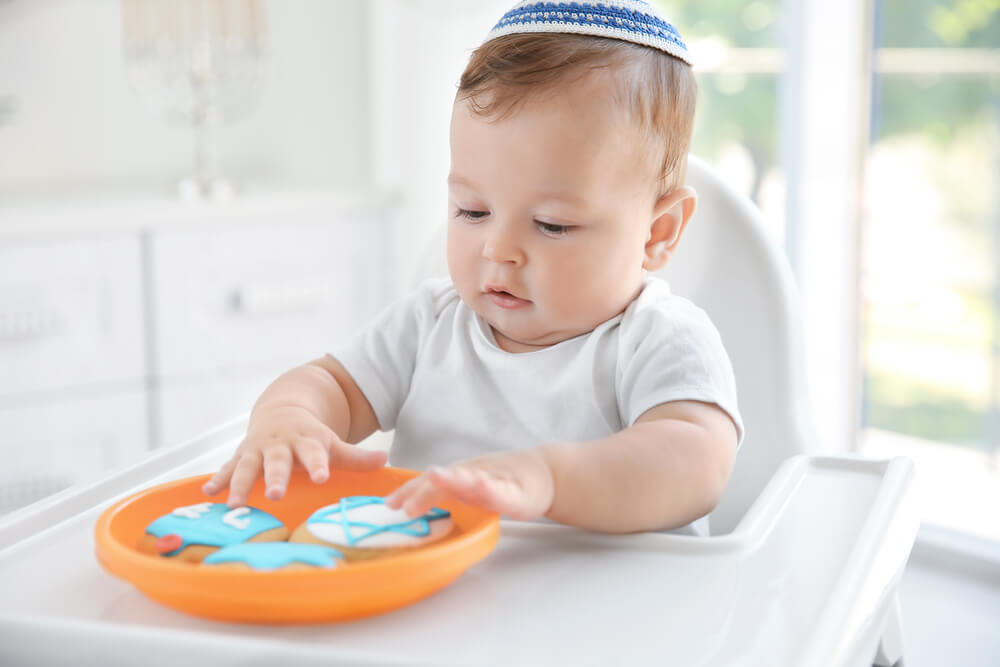In the Jewish faith, the time of weaning, or the time when the child is being weaned, should be celebrated. The weaning celebration means that the child has survived the most fragile infancy stages and is now ready to eat solid foods instead of receiving breastmilk from their caring mother.
As it says in Genesis 21:8, Abraham organized a celebratory meal on the day Isaac was finally weaned. Both parents considered leaving breastmilk behind as an important stage in Isaac’s life, stating that he managed to survive the most challenging childhood period and is now finally ready to eat solid food and eat on his own.
In this blog post, we’ll discuss the importance of weaning in rabbinical traditions and talk about what weaning ceremonies used to look like. By the end of the article, if you still have any questions or concerns, feel free to reach out to Dr. Krinsky, South Florida mohel, for additional answers.
The Miracle of Nursing
Without a doubt, nursing a baby is a tremendously beautiful experience alone, symbolizing the wonderful works of creation. Nursing itself can be interpreted as a miracle: the ability of the female body to sustain the offspring is simply astonishing. Not to mention, nursing can provide advantages both to the baby and the mother, with the latter forming a close physical bond with her child and receiving a sense of satisfaction from nourishing the baby. The process of nursing is also imperative in developing adequate trust and overall mental well-being from early on. From that perspective, weaning represents the end of this beautiful relationship but leads to another equally important chapter in a baby’s life.

The Weaning Ceremony in Rabbinical Traditions
In accordance with rabbinical traditions, weaning can take place during a relatively long period, from 18 months up to five years of age. For instance, Samuel first visited the Lord’s house at Shiloh after his mother weaned him, was approximately between two and four years old. While these are only speculations because no exact age was given when this happened, experts suggest Samual was, in fact, a toddler when he was bought to the priest Eli.
On the other hand, the weaning ceremony also has traditional importance apart from its religious significance. As you may know, infant mortality rates were relatively high in ancient times. Because of this, families used to be large because many of the born babies did not live to see adulthood. Infants and their parents were facing enormous risks, and weaning meant that the most crucial part of childhood had finally passed. Weaning played a vital role in every culture as it symbolized that the child was finally able to eat solid food and no longer required the mother’s physical support. The likelihood of the child developing good health had dramatically improved.
The Weaning Ceremony Today
In modern times, the Jewish tradition still continues to celebrate the weaning of a child, and most often, Psalm 104 is read during the ceremony, which aims to teach humans to see themselves as a fundamental part of God’s creation and part of his history, rather than seeing themselves as exclusive or elevated beings in any way.
In essence, Psalm 104 aims to teach the followers of the faith what being human should be all about. The psalm emphasizes that humans also participate in every natural process, may those be good or bad. From this aspect, Psalm 104 also aims to remind us that weaning symbolizes a certain level of protection from the harsh reality that life may often throw at us.
The Roles of the Parents

As mentioned earlier, weaning signifies a massively momentous occasion in the life of a baby born into the Jewish faith. On the other hand, this occasion should be equally important to the entire family, and a weaning celebration should be held.
On one end, the mother should celebrate that she was able to nourish and provide sustenance for her newborn baby, and as such, it would be highly recommended that she recites a blessing for having been able to perform the nursing process.
On the other hand, the weaning ceremony gives an opportunity for the father to show how much he appreciates the mother for taking such good care of the children. Because he has witnessed the miracle of nursing firsthand, he can express his gratitude for the Lord’s kindness and love.
Lastly, the occasion is also a time for both parents to recognize the new set of responsibilities they now have as mother and father, having to provide solid food for the child until they reach adulthood themselves.
The Importance of the Shabbat Regarding the Weaning Ceremony
When asking about the best time to hold the weaning celebration, religious experts suggest that the Shabbat that follows the first actual weaning would be the best time.
During the occasion, the mother can be honored by being called up and asked to reside blessings during the Torah service. The parents are also encouraged to bring the baby on this Shabbat up to the bimah or the Synagogue’s platform, where followers of the faith read from the Torah for a Misheberakh or a blessing that’s generally meant to honor special occasions.
On that very Shabbat, the father is responsible for providing and organizing a feast that’s usually held as the second (or sometimes the third) Shabbat meal.
A Faith Rich in Traditions
All Jewish rituals aim to mark critical life stages, often signalizing transitions from one life phase to the next. Starting with birth rituals like attending the mikveh for the mother after giving birth, and undergoing a brit milah for newborn boys and the Simchat bat for girls.
As you probably already know, the brit milah represents the circumcision of the newborn Jewish baby, and it signifies him joining the covenant created between God and Abraham and celebrates the boy’s welcoming into the Jewish faith. The Simchat bath celebrates the baby girl and focuses on blessing the little girl and explaining the parents’ name choice.
Later on, we have the bar and the bat mitzvah, which both mean that the children have become responsible for following their religious duties instead of their parents. In a bar mitzvah, boys read from the Torah, and girls may read a Siddur prayer during the bat mitzvah.
As you can see, the Jewish faith is filled with essential rituals that signify different life stages that all remind the followers of the faith about their religious responsibilities and their unique relationship with God and each other. In that sense, weaning can signify that the child is ready to take on new responsibilities and will mostly grow into an exemplary individual within the Jewish community.
Have any more questions? Don’t hesitate and reach out to Dr. Krinsky regarding any questions related to this or any other religious topic.



